 Your new post is loading...
 Your new post is loading...
Should executives respond when a tweet or unexpected event touches their business or rouses their employees and customers? There are risks and rewards to CEO activism. Weber Shandwick, where I serve as chief reputation officer, and KRC Research surveyed 1,050 senior executives and 2,100 consumers across 21 markets worldwide to find out what people expect from corporate brands. Our research shows that the two biggest factors that influence respondents’ opinions about companies are what customers say about them (88%) and how they react in crisis (85%). In fact, how a company responds to a controversy, including how quickly, is more important in driving public perception about the company than what is said about that company in the media (76%), by employees (76%), on the company’s website (68%), by spokespeople (61%), or in the company’s advertising (61%)....
The Samsung Galaxy Note 7 debacle is a master class in how not to handle a crisis. Much will be investigated in the months ahead. But what I find particularly interesting is how Samsung communicated what was happening at each stage of the crisis.
This weekend, the US DOT banned the Galaxy Note 7 on all US flights, categorizing the phones as “forbidden hazardous material.” It doesn’t get much clearer than that. Yet, just a few days earlier, Samsung portrayed the situation as “temporarily adjusting the production schedule to ensure quality and safety matters.”
The gap between “forbidden hazardous material” and “temporarily adjusting the production schedule” is a massive chasm. A few weeks earlier, Samsung similarly described a “global product recall” as an “exchange program.”...
No matter how secure and well-placed a brand appears to be, the danger of an online reputation crisis is always lurking. The open nature of modern day communication channels, like blogs, social networks and review sites, means that one bad customer experience or a small lapse in service standards can quickly damage a brand’s reputation. Negative experiences shared more often Research shows that consumers are much more likely to share negative experiences on social networks and other public platforms. A damaged online image can have severe effects on a brand’s value and business performance. A study by Deloitte shows that nearly 41% of companies that experience a negative reputation event reported loss of brand value and revenue....
It was late morning on Friday, October 16, when Elizabeth Holmes realized that she had no other choice. She finally had to address her employees at Theranos, the blood-testing start-up that she had founded as a 19-year-old Stanford dropout, which was now valued at some $9 billion. Two days earlier, a damning report published in The Wall Street Journal had alleged that the company was, in effect, a sham—that its vaunted core technology was actually faulty and that Theranos administered almost all of its blood tests using competitors’ equipment.
The article created tremors throughout Silicon Valley, where Holmes, the world’s youngest self-made female billionaire, had become a near universally praised figure. Curiosity about the veracity of the Journal story was also bubbling throughout the company’s mustard-and-green Palo Alto headquarters, which was nearing the end of a $6.7 million renovation. Everyone at Theranos, from its scientists to its marketers, wondered what to make of it all....
What's a little e coli among friends? That's the question US fast-casual dining chain Chipotle will soon be asking its best customers. After publicly eschewing the idea of launching a customer loyalty programme last year, Chipotle executives said on an earnings call last week that they aim to stem the flood of frequent diners abandoning the chain with - wait for it - a loyalty programme. Though the programme is likely to be temporary, Chipotle hopes it will reignite customer passion for bowls and burritos. The problem: Chipotle executives still seem to display a fundamental misunderstanding of the purpose of loyalty programmes.
The announcement was one of the only positives in an earnings call that can only be described as apocalyptic: same store sales fell nearly 30% in the first quarter of 2016 and the company posted a net loss of $26.4 million. The company has tried everything to pull out of the free fall: giving away millions of free burritos, BOGO offers, national advertising campaigns; nothing has worked. Money quote from reporter Virginia Chamlee over at eater.com:
"The aim is to target the most loyal Chipotle consumer — i.e. the one who visits 25 or more times per year. The company saw the largest declines among its top loyal (25+ visits a year) and its 'light' consumers (those that visit two to five times per year). Noting the decline in visits amongst its once most-loyal customers, [Chief Marketing and Development Officer Mark] Crumpacker said the company would love to get that 'habit' back up. "We do believe it's beneficial to us to get people back in the habit of visiting Chipotle [as often as they used to]."...
Congress is looking for answers as to how two nurses got infected, and why officials at Texas Health Presbyterian Dallas hospital sent home Thomas Eric Duncan—who would later die of Ebola—when he first came to the hospital with symptoms and said he was from Liberia.
In written testimony to the U.S. House Energy and Commerce Committee’s Subcommittee on Oversight and Investigations, Dr. Daniel Varga, the hospital’s chief clinical officer, said, quite simply, “We made mistakes.”
“We did not correctly diagnose his symptoms as those of Ebola,” Varga wrote. “We are deeply sorry.”
He goes on to say that officials don’t really know how Nina Pham, the first of two nurses at the hospital diagnosed with Ebola, could have contracted the disease. Varga wrote...
Filed under: The most WTF thing we've seen in months.
Urban Outfitters, purveyor of clothing and home goods, big-ass floppy hats and occasionally offensive T-shirts, has outdone itself with this product on its website—a "vintage" Kent State University sweatshirt featuring fake blood splatters.
In 1970, the Ohio National Guard fired on a group of unarmed anti-war student protesters at Kent State, killing four and wounding nine others. The sweatshirt sold out quickly, because there was only one. ("We only have one, so get it or regret it!" said the description.) Now it's listed on eBay by someone who says he/she will "give 50% of the profit to the Southern Poverty Law Center, who protect those who cannot protect themselves, often those who are victims of police brutality."...
BURLINGTON, Vt. — The Winooski restaurant that was overwhelmed with online comments after it took down a bacon advertisement is moving forward, with the help of a public relations firm.
Sneakers Bistro and Cafe took down a sign that said "Yield For Sneakers Bacon" that had been in the Winooski Rotary last week in response to a complaint from a "vegan and a member of a Muslim household" who said the sign was insensitive to the city's diverse population.
Many people balked at the decision, criticizing Sneakers for what they said was an unnecessary move....
Like so many of you, I have been stunned by the images of a militarized police force in Ferguson, MO harassing, tear gassing, arresting and even beating citizens who are protesting the police shoot...
...Let me be clear – these police actions are absolutely wrong from a human perspective too. And, from what I have seen, they have trampled on the people’s right to assemble, freedom of the press, free speech, destruction of personal property, unlawful arrests and likely dozens of other rights I’m not even familiar with.
But, strictly from a PR perspective, they are cutting of their own noses to spite there faces....
This was the worst media apology I’ve ever seen.
LA Clippers owner Donald Sterling—who was caught on tape telling his girlfriend not to be photographed or attend basketball games with black people—attempted to apologize during an interview with CNN’s Anderson Cooper.
Sterling did apologize. But he also took the opportunity to attack Magic Johnson for getting “those AIDS” and made new racist remarks by claiming that wealthy African Americans “don’t want” to help their own communities like Jews do...
2013 was a great year for social media but a somewhat forgettable one for online security, with a series of high-profile software glitches and exploits causing a lot of damage, both in reputations and finances, throughout the year.
Consider Twitter, for example. A hacked Associated Press (@AP) tweet that reported an explosion in the White House and an injured President Obama triggered an immediate collapse in the stock market costing hundreds of millions of dollars.
Sure, the exploit was quickly rectified and calm resorted, but the event shined a light on the sheer power of Twitter to move markets on news, even if it was falsified. Target, Amazon, NASDAQ and others also had major technical snafus in 2013, and this visual from Cast Software takes a closer look at last year’s biggest software disasters....
You may very well ask how–after the initial broadcast of fake names of Asiana pilots by KTVU after the San Francisco crash and the subsequent revelation that they were confirmed to KTVU by the summer intern for the National Transportation Safety board–things could possibly get worse for KTVU. Well, now KTVU has triggered what is now commonly referred to as the “Streisand effect” in its attempt to scrub all of the videos of their on-air blunder from YouTube. The stealth move has worked like a charm, except for all the reports about it, which basically makes them just about as stealthy as Inspector Clouseau....
...Social media disasters occur for a number of reasons, the first being that your company probably messed up. It may not have been intentional, but something, somewhere down the line, went wrong enough for someone to complain and it was enough for others to vocalize that complaint en masse. One mistake is all it takes for social media to turn against your brand.
No one is perfect and you can't expect to please everyone all the time, so the best trick is to be prepared for how to handle things if your company finds itself under attack in the social realm. Here are three examples of companies who were attacked by social media and how they handled, or should have handled the situation. Learn from their mistakes or successes so you can stay on social media's good side....
|
2016 saw its fair share of corporate public-relations mishaps, but some were more cringeworthy than others. To be sure, the PR crises in certain cases weren't all that bad compared with the serious business missteps that precipitated a few of them, but the fact remains that there is always a better and a worse way to talk to customers and the public when something's gone wrong. These were three of the year's most egregious gaffes, and what companies can learn from them heading into 2017
IAn instant is all it takes to threaten your business's sterling reputation online. You might have had an off day or the misfortune of dealing with an ornery customer, but it's almost inevitable that you'll come face to face with a negative online review at some point in your career. But, as Adrienne Weissman, CMO at G2 Crowd, recently pointed out, negative reviews aren't all bad. Some 70% of Americans read reviews before making a purchase, and those who seek out negative reviews tend to be more engaged and are 67% more likely to make a purchase. Plus, 68% of people trust a company more when their reviews are a mix of good and bad. Of course, the key to making the best of a bad review lies largely in your response. That means you need to be able to find reviews (both good and bad) as they pop up. That's definitely more social media monitoring than one person can handle... And that's where reputation management tools come in. The following five reputation management tools are some of the best on the market for tracking mentions, discovering influencers, and managing online reviews as they happen....
Loyalty is not a common resolution to crisis situations, but it should be and likely will become, as organizations realize the immediate value of the customer information loyalty programs provide. In a crisis, such insights could make the difference between quarterly losses or gains. “The only way they can restore their customers’ loyalty is having that data and maintaining that data and then responding to the consumer in any way possible to make amends,” said Britt Beemer, founder of America’s Research Group, a customer behavior firm that has performed research for at least 30 companies in crisis. “There are a lot of things you can do to win.” Many companies rely on their PR teams to lift them from a public black eye, but fewer take full advantage of the resources that exist in their loyalty marketing teams. Indeed, rewards programs can often times be sub-optimized to enhance overall business results, be it in a crisis or day-to-day operations. We spoke with several experts in crisis communications about how to use loyalty to regroup and recover from a potential public relations crisis. Following is their advice....
Take 2010, when BP was confronted with one of the biggest oil spills in history. It appeared that the organization waited to reveal all the facts until they knew that the spill had become unstoppable. Or 2015, when the U.S. Environmental Protection Agency and the California Air Resources Board uncovered widespread cheating by Volkswagen on emissions standards – something Michael Horn, president and CEO of Volkswagen America, was alerted to a year earlier but remained silent. Even when the EPA confronted the company with their findings, Volkwagen missed the opportunity to communicate first. And more recently, The Wall Street Journal revealed a culture of secrecy at blood-testing start-up Theranos and questioned the effectiveness of the technology driving their operation, leading to a federal investigation.
In each case, the organization failed to self-disclose a crisis, and as a result, each faced enormous negative publicity that continues to draw critical attention from a broad public. Even Hollywood is interested: movies have been made, or are in the works, about all three scandals. The longstanding impact of a failure to acknowledge a problem cannot be overstated.
How should companies handle a crisis differently? Our research focuses on an alternative approach, one that is referred to as “stealing thunder.” It involves self-disclosing crises and major issues before media gets hold of the story. Earlier studies on stealing thunder have found that self-disclosing organizational crises increases the credibility of organizational spokespersons. When an organization breaks the news about incriminating events, these problems will also appear less severe. In addition, organizations that steal thunder are considered more reliable and consumers are more inclined to continue purchasing their products. Our recent study adds to these findings by examining if self-disclosing an organizational crisis may be as effective as it is because old news is considered no news. When self-disclosing incriminating information, individuals will perceive the subsequent negative publicity as old news, and hence, pay less attention to it....
No matter how well you prepare, sometimes things just go out of your control. It is not always possible to prevent a crisis. When it comes to PR campaigns, learning from your mistakes can be too costly. The trick should therefore be learning from other people’s mistakes.
According to the First Research study, the U.S. public relation industry is estimated to be at $10 billion, with above 7,000 U.S. firms in action in 2013. Still a large number of businesses suffer the adverse effects of PR disasters. Why is it so? Let’s take a take look at the factors that lead to PR disasters
The proportion of corporate directors who say their companies are monitoring social media for “adverse publicity” (a gentle euphemism) has increased from 32% in 2012 to 41% today, according to the latest Corporate Directors Survey from PricewaterhouseCoopers.
However, as these figures indicate more than half of corporate directors still believe their companies aren’t doing a good enough job of keeping an eye out for adverse publicity: 55% of the PwC survey respondents said their companies either aren’t monitoring social media efficiently, or aren’t doing it at all. That’s down moderately from 61% in 2012.
PwC found a similar story in regards to social media strategies for applications like marketing, research, and internal communications. Thus 40% of respondents said their companies are leveraging social media for strategic goals, while 54% said their companies’ efforts to leverage social media are insufficient or nonexistent; both figures are unchanged from two years ago....
Last week, an audio technician for the television program Cops was killed by friendly fire while filming a robbery at a Wendy’s in Omaha, Nebraska.
The Omaha police chief, Todd Schmaderer, delivered an almost perfect press conference—one that stands in marked contrast to the shameful media interactions in Ferguson, Missouri—that should be studied by PR professionals as a terrific example of how to communicate in crisis.
PR pro Dave Statter, who writes the excellent STATter911 blog (and wrote about this story first), called this “one of the most effective and timely presentations following a police involved shooting I’ve witnessed.”
He’s right. Chief Schmaderer did many things right in this press conference. Below, you’ll find the five things that stood out to me most....
A GIANT public relations agency that has been under fire for a couple of gaffes in the last couple of weeks says it is taking steps to try to make sure such blunders do not recur — the kinds of steps it would recommend to clients in the same predicaments.
“What the leadership team decided,” Ben Boyd, president for practices, sectors and offerings at Edelman in New York, said in an interview on Friday, is that “we will treat ourselves like we treat a client.”
“Lesson learned,” he added.
“Just because you advise clients on the complexities of today’s world, that doesn’t mean they’re easier to manage,” Mr. Boyd said, adding that “it would have been smart” to have had in place at Edelman some of the internal protocols and processes that the agency’s 5,000 employees suggest that clients adopt....
An Ecuadoran environmental group apparently started and promoted the hashtag #AskChevron, but Twitter users seem to believe the oil company created it.
The promoted trending topic on Twitter on Wednesday morning was #AskChevron, a hashtag similar to #AskJPM and #myNYPD, which resulted in social media disasters for J.P. Morgan and the New York Police Department, respectively.
Here’s the twist, though: Chevron seemingly has nothing to do with #AskChevron.
The company hasn’t tweeted the hashtag. Its Wednesday morning tweets, which were about its annual stockholders meeting, used the hashtags #Chevron and #stockholders, not #AskChevron.
The account that has tweeted #AskChevron the most is @thetoxiceffect, an environmental group based in Ecuador. The group has a promoted tweet with an image listing transgressions that “Chevron is guilty of”:...
We’ve known for some time that Snapchat‘s privacy claims don’t quite add up, and today the network and the Federal Trade Commission have reached an agreement on that point.
What does this mean? Basically, Evan Spiegel and company will officially admit that snaps don’t really “disappear forever” (they never did) and that recipients may, in fact, preserve the images/clips indefinitely in several ways without letting the sender know....
It seems like every Crisis 101 playbook now includes taking out full page ads in a cross section of national and metro dailies to publish an open letter from the CEO.
The tactic gives the company under siege the opportunity to control the narrative.
It can be effective as long as the company surrounds the open letter with other forms of communications, which was the case with Target and its CEO conducting aninterview on CNBC.
Still, we’ve seen how the open letter can add to the mess, as highlighted in “Letter to Toyota Customers Hits Pothole.”
With this in mind, let’s reverse-engineer Target’s try...
...Edward Burkhardt, CEO of Montreal, Maine & Atlantic Railways waited 5 days before visiting the crash site andmaking a statement to the media. His statement lacks a significant, quotable apology to those affected, while focusing too much on the technical aspects of dealing with insurance, finances and monetary issues. He even begins his statement by defending whether he is a compassionate person.
True, the CEO does not always need to be the spokesperson in every crisis. However, a crisis this big demands an appearance and statement within 24 hours of the onset of the crisis.
True, I believe a CEO should spend more time managing the crisis and running the company than trying to be a spokesperson, but a crisis this big demands at least a few hours to talk with the media and the families who have lost loved ones. News reports indicate that at the time of the news briefing, the CEO had not reached out to families....
|



 Your new post is loading...
Your new post is loading...




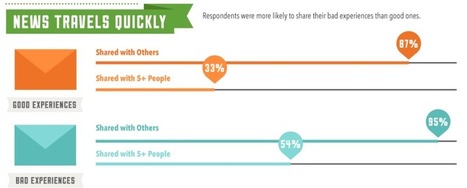

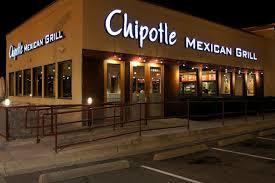

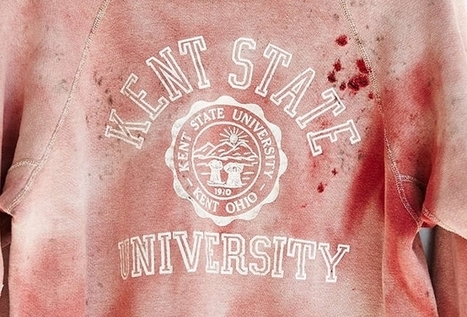



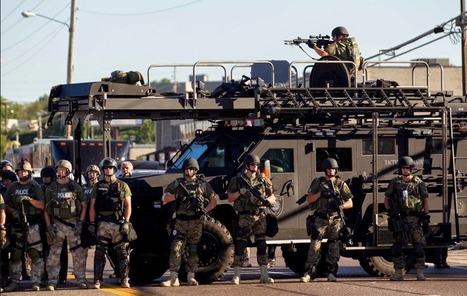


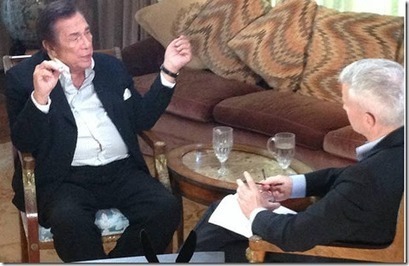
![Twitter, Amazon, NASDAQ, Target – 2013′s Biggest Digital Disasters [INFOGRAPHIC] - AllTwitter | Public Relations & Social Marketing Insight | Scoop.it](https://img.scoop.it/m-Tio9IQrMS7Ee9nI8vchTl72eJkfbmt4t8yenImKBVvK0kTmF0xjctABnaLJIm9)

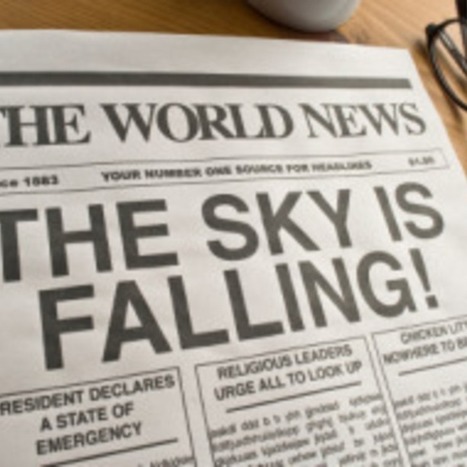




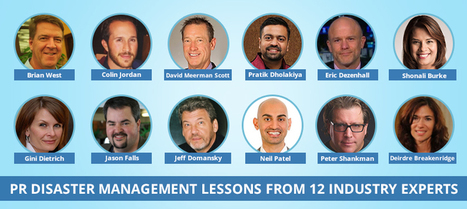



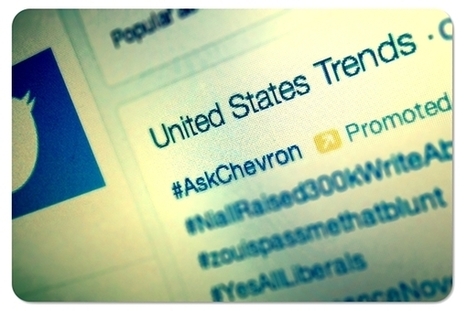









This was a very interesting article because it speaks about the way CEO's speak on behalf of major political issues on their companies and whether they should respond or not so they don’t stir up any controversy or any kind of other issues that would jeopardize their company. The article gives its opinion on whether or not they should respond when there company is the one being involved. It gives info on how some companies customers make for 88% of their respondents. It shares as well how important it is for a company to share their opinion because it comments and keep the opinion preserved and well rounded. Of the executives they reviewed a lot of them said they prefer when someone speaks up for the company and shares a public opinion.